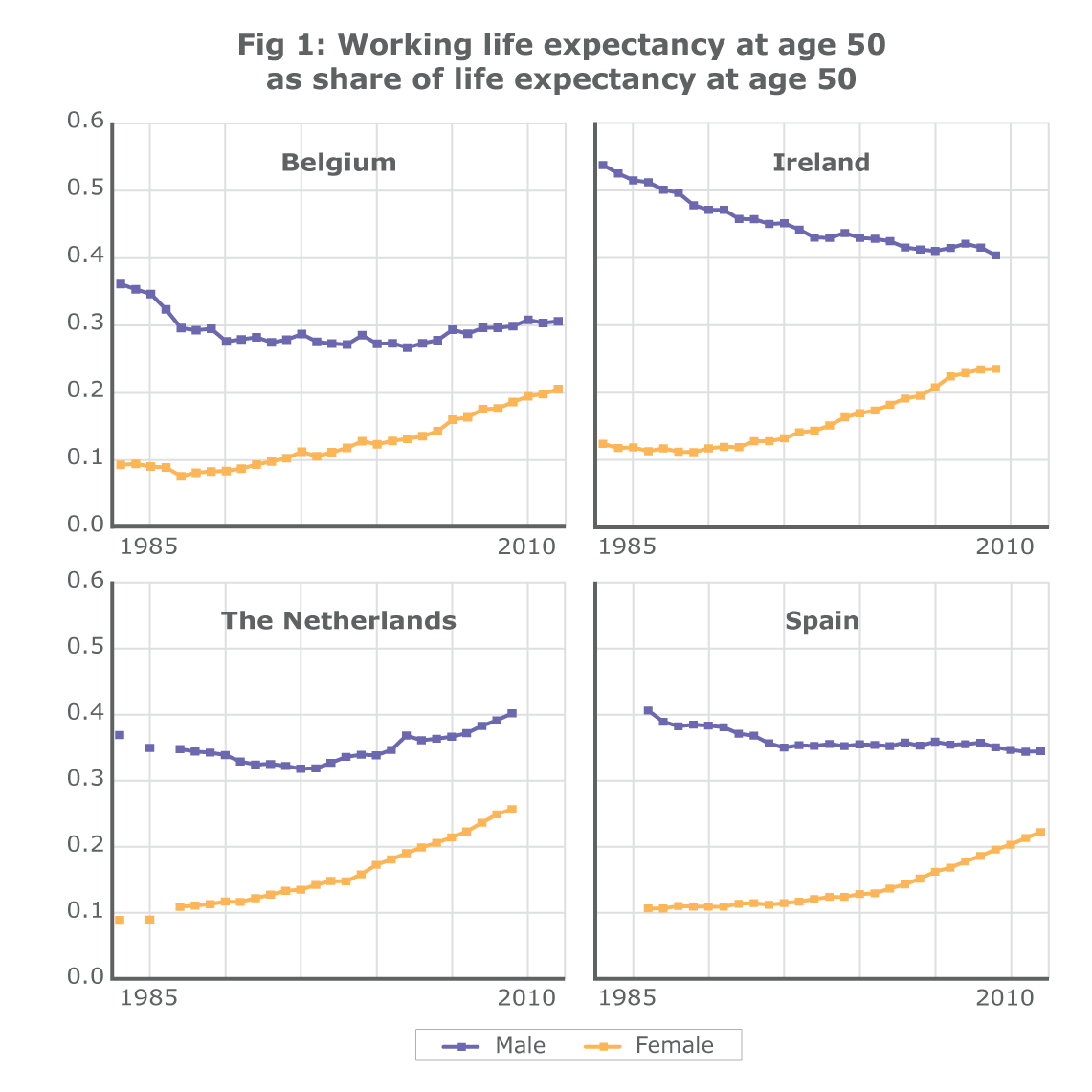Our lives are getting longer, yes, but this does not necessarily imply more active years. As life expectancy continues to rise, there is a natural tendency to tack these additional years onto the economically inactive phases of our life course, namely to post-retirement. This can be costly for public budgets. It’s “natural”, though, because adding them anywhere else would require a conscious change to when we retire. Politically, touching retirement is risky, but this is not necessarily the problem. Many countries have already begun adopting measures to prolong working life. A key question is whether, how well, and for whom these measures are working.
STEP BY STEP
We know that national measures are bearing fruit with simple labour market participation data. We can even break this down by gender. From 1983 to 2010, the labour force participation of European men aged 50 to 74 declined and then recovered. Over the same period, we can see that women, who historically have a lower participation rate, begin to catch up. Older people in Europe are anything but homogenous in terms of health, socio-economic status, work history, education, and family arrangements – all of which vary by country. Working life expectancy (WLE) – what Eurostat calls “duration of working life” – is a measure capable of summarising the differences in labour force participation between and within countries and stands for the average number of years people can expect to be part of the labour force. Policymakers should get to know it.
Like most good indicators, WLE is a combination of existing, tested metres. In this case, WLE combines life tables which contain information on the probability that a person will die in any given year, and labour force participation rates to get the number of economically active years a person has left. In our working paper [1], we take WLE at age 50 and we compare it to normal and healthy life expectancy, which provides the context needed to determine if national measures are really helping us put our extra years where they count.
CATCHING UP
On the one hand, we don’t see any immediately recognisable patterns across regions, welfare state type, or other variables.
The data, however, reveal an important gender dimension: First, men in all 26 countries of the study still spend more of their remaining years working than women. This is not surprising as men still have higher labour force participation and shorter life expectancy than women. It is still significant, though, because it illustrates the disadvantage many women face in terms of pension contributions that accumulate over the life course.
Yet we also see a general trend of convergence. In most cases, women have made gradual gains on men, but in Belgium, Ireland, the Netherlands and Spain, women made up considerable ground (Figure 1). This suggests that for the past two decades, women have been offsetting improvements in life expectancy with economic activity more effectively than men.

Source: [1], see below.
WHAT YOU’RE MISSING
Further analysis is needed to understand other important dimensions of working life expectancy, like education or country-specific developments. For example, differences in WLE at age 50 between education groups are intriguing and need to be explored more thoroughly; however, education-specific calculations of WLE at age 50 miss how young people transfer into higher education categories well into their 30s. Hence, WLE by education should be calculated for the whole life course. Looking at the educational dimension in more detail would allow us to uncover inequalities in pension systems, but we would need comparable, education-specific time-series data for life expectancy, which at the moment only few countries collect. If our data show anything, though, it is that, if we want to fairly but fully exploit our ever-improving life expectancy, the effort will be justified.
Elke Loichinger, Chulalongkorn University, Thailand and Daniela Weber, Wittgenstein Centre (IIASA, VID/ ÖAW, WU), Austria Contact: Elke.L [at] chula.ac.th
[1] Elke Loichinger and Daniela Weber (2016). “Trends in Working Life Expectancy in Europe.” Working Paper WP 16-004, International Institute for Applied Systems Analysis.